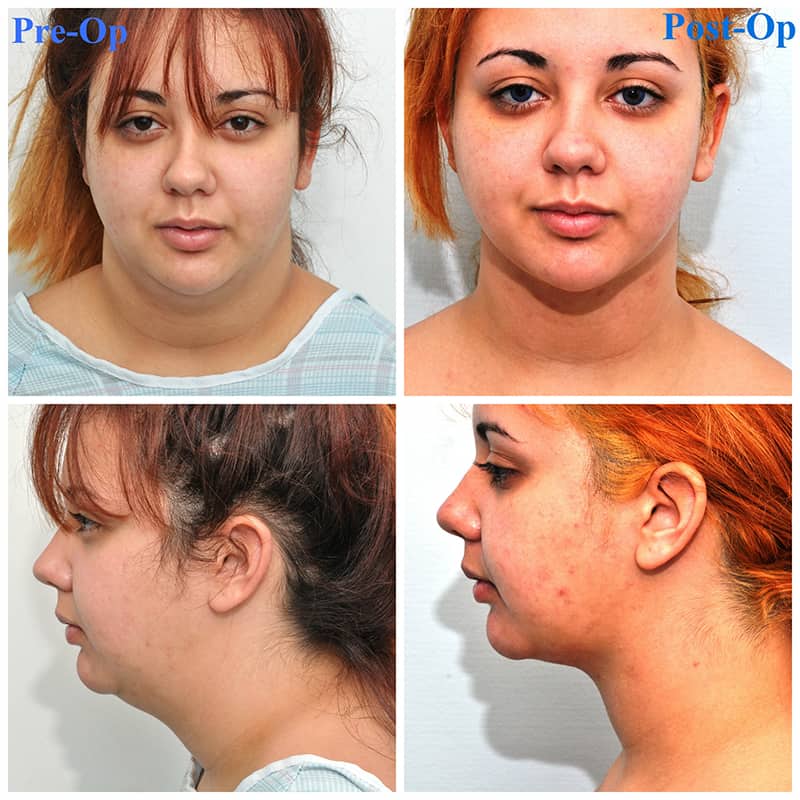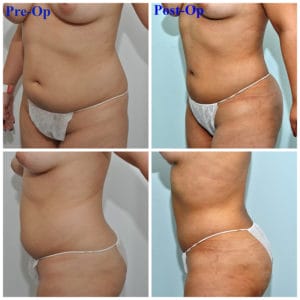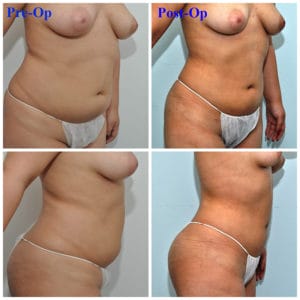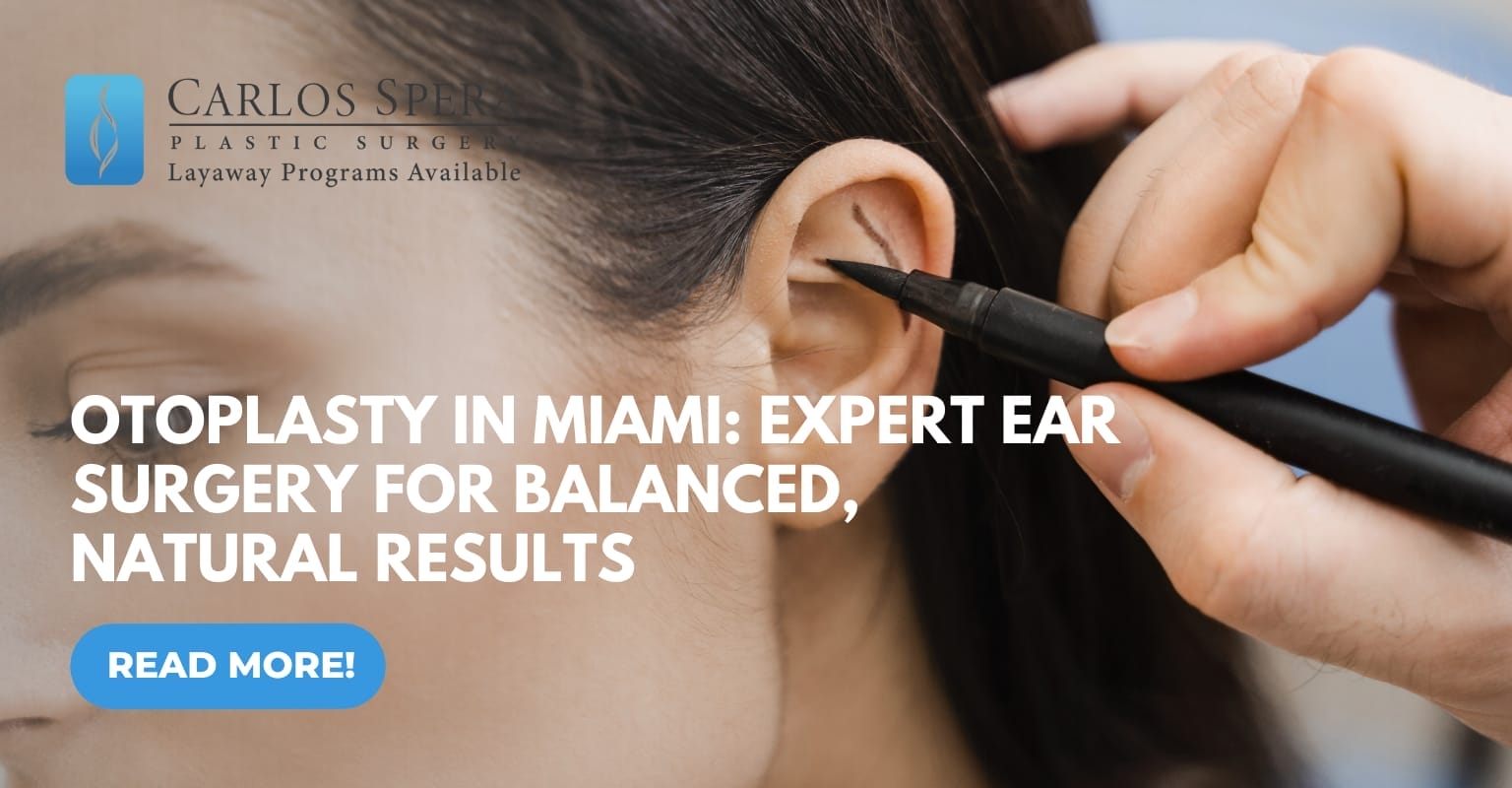Removal of fat from different areas of the body by inserting a cannula through small incisions in the skin was first formally described in the early 1980s by French surgeons. They demonstrated that fat could be extracted from under the skin, helping to improve the contour of the body, without the need for performing large incisions and removing portions of skin along with the fat. Before the era of liposuction, contouring of the body in the different areas was only achieved by making large incisions and removing the overlying skin along with the underlying fat, resulting in large scars and many times severe deformity. This new technique, then called liposuction, allowed for removal of only the fat, thereby creating a latticework of vessels and fibrous tissue that kept the skin attached to the deep fascia, allowing the skin to retract and re-contour to the new given shape of the area. When originally described, the surgery was performed with cannulas that were up to a half-inch in diameter. Because of this large width of the cannulas, they could not be used close to the skin surface, so liposuction could only be performed in the deep fat compartments to avoid creating wavy, irregular skin surface contours. Years later, surgeons realized that fat could be extracted with thinner cannulas, and the use of thinner instruments allows us now to perform more superficial liposuction procedures, now referred to as liposculpture. Liposculpture was then performed, as we do these days, closer to the skin, in the superficial fat compartments, but of course always with care not to take too much fat from under the skin, which could lead to indentations and severe deformities that are impossible to correct once they are unfortunately created. Another big advance in liposculpture/liposuction technique was the introduction of tumescent anesthesia. Tumescent anesthesia is the infiltration of large amounts of fluid under the skin, in the fat, which is done before performing the liposuction. This solution contains substances that largely decrease the bleeding and also provide a local anesthetic effect that allows the procedure to be performed under local anesthesia. There is no doubt that this “wet” liposuction is the way to go, whether you want to perform the procedure under local anesthesia or under general anesthesia. In the case of general anesthesia, the benefit of the tumescent technique is not only decreased bleeding during the procedure, but also patient comfort when the patient wakes up and recovers from the general anesthesia. It is my experience that when performing several areas of liposuction at the same time on one patient, it is better to use either a “twilight” or general anesthetic so as to be able to perform a complete and intense surgery without having to stop it because of patient discomfort. Having described the basic principles and technique for liposuction/liposculpture, what follows is a discussion of the newer equipment that has allowed us to improve our results. The first requirement for liposuction is the machine that generates ultrasonic waves. Ultrasonic liposuction is performed with equipment that generates a specific frequency of ultrasonic waves that has the particular ability to melt fat. The use of this equipment also decreases the bleeding and allows the surgeon to work closer to the skin, heating the undersurface of the dermis, not only removing more fat but also allowing better sculpture of the different treated areas. Some of the fat that is not even removed when we complete the procedure with the traditional liposuction will be reabsorbed by the body over time because it has already been liquefacted and the fat cells “damaged” by the ultrasonic waves.
Laser liposuction, often called “Smart Lipo,” utilizes a specific wavelength of laser that is delivered to the tissues with a fiberoptic cannula before liposculpture is performed. The goals are the same as ultrasonic liposuction; i.e., to melt the fat, warm up the skin and stimulate skin retraction and better contouring. Like anything else, each of the above-mentioned techniques has specific indications depending on the area of the body that is being treated. Ultrasonic liposuction is excellent for large areas, like the abdomen and back, while laser liposuction is optimal for smaller areas with thinner skin and less fat. A good example of the benefits of laser liposuction can be seen in the following pictures, where a patient’s neck was treated using this technique.
The ideal candidate for liposculpture is someone with localized fat; someone who is not extremely obese and has not lost massive amounts of weight, allowing the skin to retract when the excess fat is removed with the liposculpture. So basically we can say that liposculpture is ideal for patients who have localized adiposity, who cannot lose these adipose deposits with diet or exercise. Stretching the indications, some moderately obese patients can be helped with liposuction, and even some diseases that are related to weight and excess fat, like diabetes, have been proven to improve with liposuction. Other equipment we use in our practice is Power Liposuction. This equipment allows the cannula to vibrate at the time that we are performing the liposculpture, allowing for gentle removal of the fat, making the procedure less traumatic for the patient and easier for the surgeon, who in this way can work longer on the patient and remove virtually all the fat that needs to be removed. As an easy-to-understand analogy, it would be like the difference between using a manual screwdriver versus using a power screwdriver. Everybody knows how much easier and less fatiguing it is to perform tasks with power instruments versus manual instruments. As mentioned, vibration of the cannula also induces melting of the fat and allows a more intense and complete liposculpture. In our surgery center, there is no limit of how much fat can be removed, since the regulations for ambulatory surgical centers are different from the regulations for in-office surgery. Of course, we take into consideration the safety of the patient and the fat is removed according to the patient’s needs, but patient safety is our priority.
Depending on the treated areas, the recovery period could be from 4 days, if just the torso is treated, up to 7 days if liposculpture of the lower extremities or the arms is involved. Most of the procedures are ambulatory, meaning that the patient can go home the day of the surgery. However, for special conditions or larger liposuction treatment, we have available a suite in the same building complex for the patient to stay overnight with a nurse, and then be discharged home the next morning. after liposuction, because of the tumescent anesthesia infiltration, it is common for the small incisions performed in the skin to continue leaking some reddish fluid, which is a mix of tumescent solution with fairly small amounts of blood, so sometimes patients who don’t have enough assistance at home, or who those might who have anxiety about this, feel more secure if they stay with somebody with experience in the postoperative care of liposuction patients, someone who can assure their wellbeing, take care of the dressings and help them more easily manage any postoperative discomfort they might have. finally, liposuction needs to be understood as a safe procedure but it needs to be performed properly and carefully by a well-trained and experienced practitioner, and also deserves to be respected for what it is, which is surgery, in order to prevent and avoid any complications.
- Home
- About Us
- Breast
- Body
- Face
- Tempsure Envi
- Deep Plane Facelift
- Rhinoplasty
- Ultrasonic Rhinoplasty
- Septoplasty
- Facelift (Rhytidectomy)
- Blepharoplasty (Eyelid Surgery)
- Otoplasty (Ear Surgery)
- Mentoplasty (Chin Implants)
- Endoscopic Brow Lift
- Smartgraft FUE Hair Transplant
- Hair Transplant Surgery
- Non-Surgical Treatment of Alopecia
- Rhinophyma
- Dermal Fillers
- Neck Lift
- Skin
- Payment Plans
- Home
- About Us
- Breast
- Body
- Face
- Tempsure Envi
- Deep Plane Facelift
- Rhinoplasty
- Ultrasonic Rhinoplasty
- Septoplasty
- Facelift (Rhytidectomy)
- Blepharoplasty (Eyelid Surgery)
- Otoplasty (Ear Surgery)
- Mentoplasty (Chin Implants)
- Endoscopic Brow Lift
- Smartgraft FUE Hair Transplant
- Hair Transplant Surgery
- Non-Surgical Treatment of Alopecia
- Rhinophyma
- Dermal Fillers
- Neck Lift
- Skin
- Payment Plans








